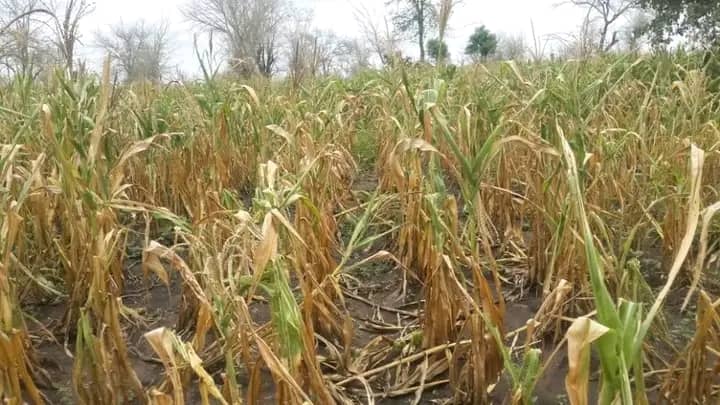By Chilenje Chilenje
Maize prices have jumped about 70 percent in just three months, with a 50-kilogram bag now selling for between K75,000 and K78,000, up from around K45,000 in June 2025, in Nsanje District.
Random interviews in the district reveal that many households can no longer afford to buy a full bag.
Instead, they are purchasing smaller quantities, such as a five-litre bucket at about K7,500, though this is proving unsustainable.
Alice Divason, a resident of Nsanje, describes the situation as unfair and has called on the government, through the Agricultural Development and Marketing Corporation (ADMARC), to intervene by selling maize at affordable prices to stabilize the market.
“Most of us are not working and cannot afford to buy a 50kg bag of maize; we therefore plead with the government and other stakeholders to come to our rescue,” says Divason.
Senior Group Village Headman Magulugulu says even feeding his own family has become a challenge, and that the crisis is affecting development in the area as people spend most of their time searching for food.
“Hunger has worsened here because people did not realize bumper yields due to floods that had hit us,” says Senior Group Village Headman Magulugulu.
At Nsanje Boma, trader Simeon Nyangumi alleges that some vendors are importing maize from Mozambique, a move he says has also contributed to the price hikes.
Agriculture expert Tamani Nkhono Mvula has advised the government to increase maize imports to address food security concerns, noting that the low local production has been the main driver of the price surge.

Recently, the Japanese Government donated one thousand nine hundred seventy metric tons of maize worth 2.6 million US dollars, equivalent to four billion five hundred fifty million kwacha, to Malawi.
The grant, which will be managed by the World Food Programme, is intended to support over one hundred seventy-seven thousand of Malawi’s most vulnerable people during the 2025/2026 lean season.
WFP Country Director Hoyoung Joon Lim says climate change continues to undermine Malawi’s food security, negatively affecting crop production prospects.
The Department of Disaster Management Affairs Commissioner, Moses Chimphepo, has emphasised the need for collective responsibility to help households at risk of hunger.
Chimphepo has since hailed the donation by the Japanese government to support families in need of food.
ADMARC Spokesperson, Theresa Chapulapula, says the corporation plans to purchase 20 metric tonnes of farm produce from farmers, of which 13 metric tonnes will be maize.
The situation could worsen, according to the Integrated Food Security Phase Classification, which projects that nearly 5.7 million Malawians could face crisis or emergency levels of food insecurity.
Cyclones Jude and Chido have already destroyed crops and livelihoods for tens of thousands of households.
UNICEF reports that severe malnutrition in Malawi has increased by 21 percent between February 2024 and February 2025.
Officials from the Ministry of Agriculture were not immediately available for comment, but the government is reportedly pursuing interventions such as improving irrigation, enhancing seed quality, maintaining soil health, and strengthening post-harvest infrastructure.
While these efforts are commendable, experts warn that the government must intensify collaboration with stakeholders to protect vulnerable families during the lean season.
A nation whose people cannot access enough food will struggle to develop, as citizens focus their energy on survival rather than contributing to economic growth and community development.

Timveni Child and Youth Media Organisation uses radio and television to give a voice to Malawi's young people, especially girls, on children's rights. The organization exists to help young people in Malalwi make a difference in their own lives, create awareness about children’s rights, and build the capacity of children and young people.
- Terms and Conditions






Leave a Reply